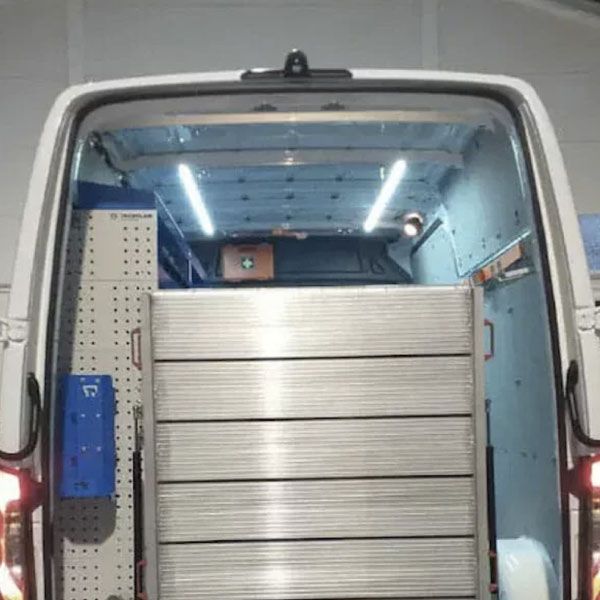Why Workshop Lighting Is So Important?
Workshop lighting should be suitable for working during the day and at night. Knowing which workshop lights are the best for your business can help to improve concentration and thus productivity levels and accuracy.
There are several workshop lighting options to choose from. But the most important thing is to install the right type of workshop lights for the appropriate location.
Your choice of lighting rig is particularly important in garages, basements, units and mobile workshops which don’t receive much natural light. Artificial lighting for a workshop can be uncomfortable for you and your employees if you don’t select the right type of light.
Research shows that poor workshop lighting has a negative effect on workplace performance. Workshop lights stimulate hormones which cause fatigue. This means workers are less able to concentrate and are more prone to mistakes.
Scientists found that, in most cases, a colour temperature between 4500K-5000K is the optimal value. Higher colour temperatures can be too intense and uncomfortable and lower values may not provide sufficient light.
When choosing appropriate lighting for a workshop, you should consider:
- Bulb type – LED v Flourescent.
- Colour temperature.
- Lumens.
- Installation type (wiring).
- Protection.
Table of Contents
LED v Fluorescent Lighting for Workshops
LED lighting is the most popular choice of workshop lighting today. As LED lights have grown in availability, the costs have dropped considerably. They are also less power-hungry than traditional fluorescent and incandescent lighting options. Energy Savings Trust estimates you can save around £65 a year on your electricity bill with LED lights.
LED technology also has several other advantages over fluorescent lighting. It doesn’t flicker and has a longer lifespan. You typically get around 50,000 hours from LED lights – four to five times more than fluorescent lights.
Brightness is also a key factor. In the UK and Europe, it is recommended that lighting in workshops is UGR<19 – a Unified Glare Rating that is 19 or less. Anything above UGR 19 can impair vision to the point you can clearly see what you’re doing.
Light colour is also important. As mentioned above, 4500K-5000K has been found to support concentration and productivity levels the most. In workshops that do not have exposure to natural light, LED with 6500K is more suitable.
Lumens are the measure of light per square foot. For ambient lighting in a workspace, the recommended level is around 130-150 lumens.
Workshop Lights for Individual Spaces
Focused lighting on individual workstations enhances visual performance in poor lighting conditions. Worktop lighting avoids glare, and shadows, and improves close-up work.
Wall lights. floor lamps or table lamps are the most common options. If you have overhead cabinets, the better option is to install workshop lights on the underside of the cabinet. This means there is no light stand taking up any desk space.
LED strips fastened to the wall are another good option that avoids clutter. Energy-efficient strips can also be cut down to size to give you more flexibility to customise your workshop lighting rig.
Another factor to consider when installing workshop lighting is the environment. What substances are you using and is there any risk of water coming into contact with your lighting?
For example, home garages could develop a leak and basements are prone to moisture and have a higher risk of flooding. Lamps with an IP65 protection level are ideal for protecting your lights from the water and a build-up of dust.
IP65 waterproof LED battens also offer reliable protection against moisture. This type of lighting is made from polycarbonate which provides the lamp with an invincible layer of protection. They’re so tough, you can even install LED battens in outdoor areas or use them as Transit van warning lights.
